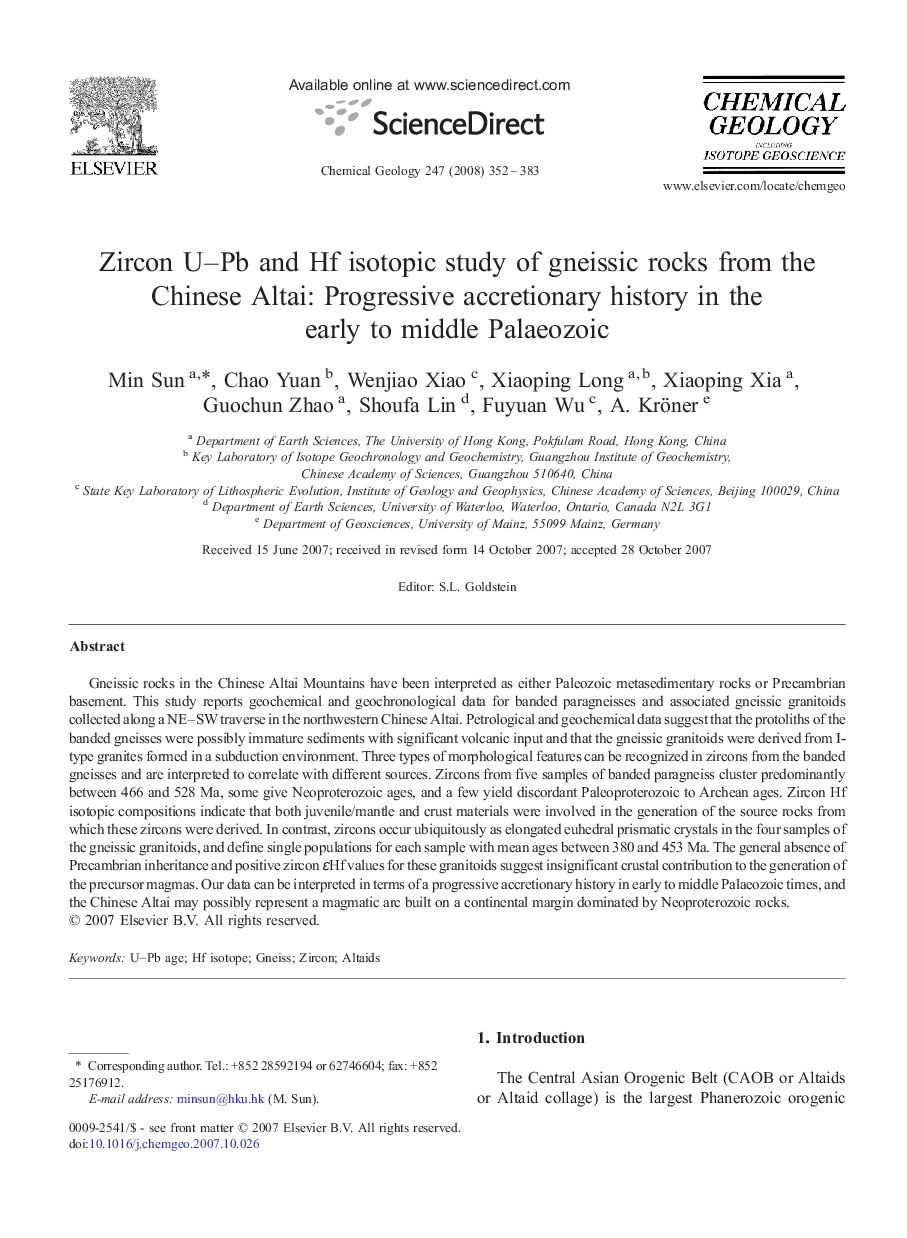| Article ID | Journal | Published Year | Pages | File Type |
|---|---|---|---|---|
| 4700796 | Chemical Geology | 2008 | 32 Pages |
Gneissic rocks in the Chinese Altai Mountains have been interpreted as either Paleozoic metasedimentary rocks or Precambrian basement. This study reports geochemical and geochronological data for banded paragneisses and associated gneissic granitoids collected along a NE–SW traverse in the northwestern Chinese Altai. Petrological and geochemical data suggest that the protoliths of the banded gneisses were possibly immature sediments with significant volcanic input and that the gneissic granitoids were derived from I-type granites formed in a subduction environment. Three types of morphological features can be recognized in zircons from the banded gneisses and are interpreted to correlate with different sources. Zircons from five samples of banded paragneiss cluster predominantly between 466 and 528 Ma, some give Neoproterozoic ages, and a few yield discordant Paleoproterozoic to Archean ages. Zircon Hf isotopic compositions indicate that both juvenile/mantle and crust materials were involved in the generation of the source rocks from which these zircons were derived. In contrast, zircons occur ubiquitously as elongated euhedral prismatic crystals in the four samples of the gneissic granitoids, and define single populations for each sample with mean ages between 380 and 453 Ma. The general absence of Precambrian inheritance and positive zircon ɛHf values for these granitoids suggest insignificant crustal contribution to the generation of the precursor magmas. Our data can be interpreted in terms of a progressive accretionary history in early to middle Palaeozoic times, and the Chinese Altai may possibly represent a magmatic arc built on a continental margin dominated by Neoproterozoic rocks.
